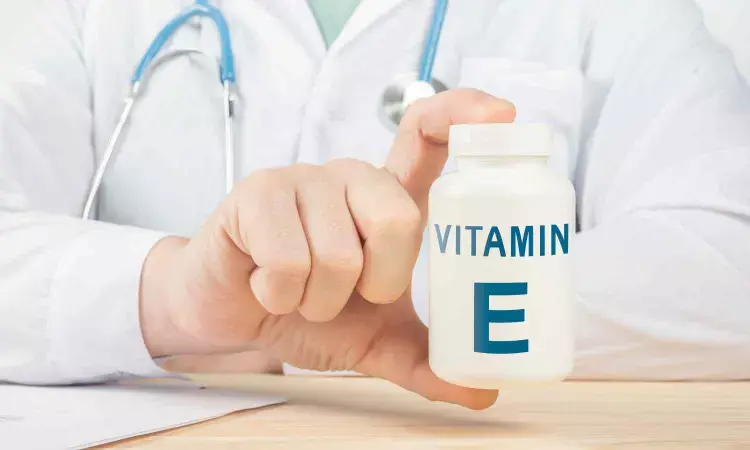- Home
- Medical news & Guidelines
- Anesthesiology
- Cardiology and CTVS
- Critical Care
- Dentistry
- Dermatology
- Diabetes and Endocrinology
- ENT
- Gastroenterology
- Medicine
- Nephrology
- Neurology
- Obstretics-Gynaecology
- Oncology
- Ophthalmology
- Orthopaedics
- Pediatrics-Neonatology
- Psychiatry
- Pulmonology
- Radiology
- Surgery
- Urology
- Laboratory Medicine
- Diet
- Nursing
- Paramedical
- Physiotherapy
- Health news
- Fact Check
- Bone Health Fact Check
- Brain Health Fact Check
- Cancer Related Fact Check
- Child Care Fact Check
- Dental and oral health fact check
- Diabetes and metabolic health fact check
- Diet and Nutrition Fact Check
- Eye and ENT Care Fact Check
- Fitness fact check
- Gut health fact check
- Heart health fact check
- Kidney health fact check
- Medical education fact check
- Men's health fact check
- Respiratory fact check
- Skin and hair care fact check
- Vaccine and Immunization fact check
- Women's health fact check
- AYUSH
- State News
- Andaman and Nicobar Islands
- Andhra Pradesh
- Arunachal Pradesh
- Assam
- Bihar
- Chandigarh
- Chattisgarh
- Dadra and Nagar Haveli
- Daman and Diu
- Delhi
- Goa
- Gujarat
- Haryana
- Himachal Pradesh
- Jammu & Kashmir
- Jharkhand
- Karnataka
- Kerala
- Ladakh
- Lakshadweep
- Madhya Pradesh
- Maharashtra
- Manipur
- Meghalaya
- Mizoram
- Nagaland
- Odisha
- Puducherry
- Punjab
- Rajasthan
- Sikkim
- Tamil Nadu
- Telangana
- Tripura
- Uttar Pradesh
- Uttrakhand
- West Bengal
- Medical Education
- Industry
Increasing vitamin E intake may lower risk of developing peripheral artery disease, finds study

A new study published in the journal of PLOS One showed that a decreased risk of peripheral artery disease (PAD) was linked to higher dietary vitamin E intake.
Peripheral arterial disease is caused by atherosclerosis and is a common condition affecting more than 200 million people globally. PAD affects approximately 8.5 million persons in the US, with equal prevalence among men and women over 40.
Vitamin E, an antioxidant that dissolves in fat, has been identified as a major role in lowering lipid peroxidation in experimental circumstances. Vitamin E has been linked to atherosclerosis and thrombotic complications. Its anti-atherosclerotic activity is attributed to a variety of biological functions, including antioxidants that scavenge free radicals and non-antioxidants that control signal transduction, cellular proliferation, and gene expression.
There is ongoing discussion on the connection between peripheral artery disease (PAD) development and dietary vitamin E intake. Thus, this study by Qiang Liu and colleagues wanted to demonstrate the connection between dietary vitamin E consumption and PAD.
The data from 6,588 individuals in the US National Health and Nutrition Examination Survey were analyzed retrospectively using a cross-sectional approach between 1999 and 2004. This study gathered information on cardiovascular disease, diabetes, smoking, hypertension, body mass index, total cholesterol, HbA1c, age, race, sex, marital status, physical activity, education, and income.
When all pertinent variables were taken into consideration, a negative relationship between dietary vitamin E consumption and the risk of PAD was found. The prevalence of PAD was 5.9% overall, with 50.4% of females and 49.6% of men affected. Peripheral arterial disease was less common in people in the 3rd quartile of dietary vitamin E consumption than in people in the 1st quartile. The subgroup analysis revealed similar patterns of relationship (all interaction P values were >0.05).
Overall, this study supports a negative relationship between dietary vitamin E intake and the prevalence of PAD in US people over 40. Therefore, to reduce their risk of developing PAD, those with inadequate dietary vitamin E consumption should think about increasing their vitamin E intake.
Source:
Liu, Q., Wu, X., Wang, Y., Wang, X., Zhao, F., & Shi, J. (2025). Association of dietary vitamin E intake with peripheral arterial disease: A retrospective cross-sectional study. PloS One, 20(3), e0320356. https://doi.org/10.1371/journal.pone.0320356
Neuroscience Masters graduate
Jacinthlyn Sylvia, a Neuroscience Master's graduate from Chennai has worked extensively in deciphering the neurobiology of cognition and motor control in aging. She also has spread-out exposure to Neurosurgery from her Bachelor’s. She is currently involved in active Neuro-Oncology research. She is an upcoming neuroscientist with a fiery passion for writing. Her news cover at Medical Dialogues feature recent discoveries and updates from the healthcare and biomedical research fields. She can be reached at editorial@medicaldialogues.in
Dr Kamal Kant Kohli-MBBS, DTCD- a chest specialist with more than 30 years of practice and a flair for writing clinical articles, Dr Kamal Kant Kohli joined Medical Dialogues as a Chief Editor of Medical News. Besides writing articles, as an editor, he proofreads and verifies all the medical content published on Medical Dialogues including those coming from journals, studies,medical conferences,guidelines etc. Email: drkohli@medicaldialogues.in. Contact no. 011-43720751


